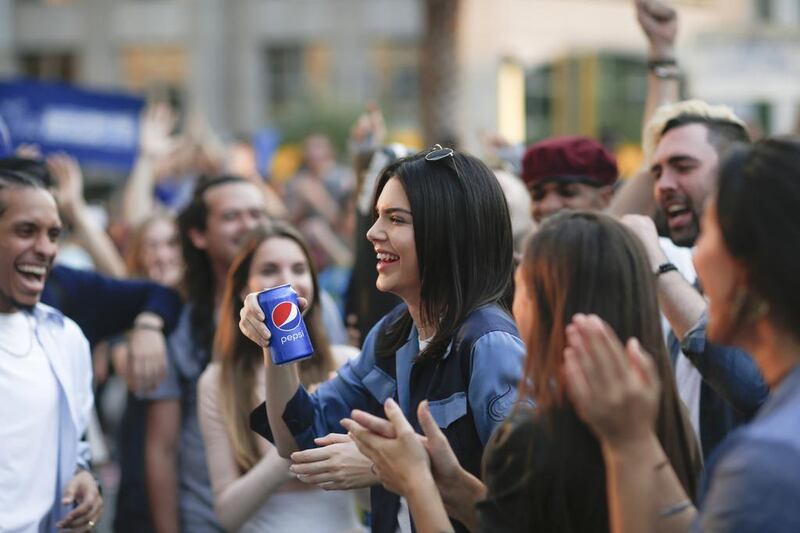When adults gather to create a commercial to appeal to young people, it’s going to go wrong
Years ago, the Burger King corporation tried to “connect with the kids”. This is how people in the marketing business talk. They talk about “connecting” with a certain group or demographic, which is a very high-priced way of saying, “We’d like to sell more hamburgers to young people”.
So the marketing and strategy executives got together and created something called the “Burger King Kids Club”, which their young customers could join. They buttressed this initiative with a series of animated advertisements featuring a fictionalised group of kids, all of whom were supposed to be members of the Burger King Kids Club. It was a carefully assembled collection of ethnically diverse kids – a few Caucasians, an Asian, an African- American, a Mexican-American – and it even included a kid in a wheelchair, whom the other characters nicknamed “Wheels”.
I am not making this up.
Just try to calculate, for a moment, the number of meetings it took to come up with that concept and those characters. Try, for a second, to estimate the hours spent in off-site conferences, brainstorming sessions, late-night creative meetings with white boards and large sheets of paper tacked to the wall. Imagine the time spent conducting focus groups, analysing research data, interviewing child psychologists trying to figure out what kids might relate to and how best to “connect” to them.
There was even a moment, I’m absolutely certain, when someone broke the tense and defeated silence of a brainstorming session with: “I got it, I got it! They call the kid in the wheelchair ‘Wheels’!”
It’s easy to mock, but this is the kind of thing you’re supposed to do if you’re in a large company that lives or dies by its marketing. You’re supposed to try to “connect” with kids and every other customer group.
So have a small amount of pity – very small – for the marketing team at Pepsi that came up with the recent and disastrous Pepsi commercial starring Kendall Jenner.
In the first place, if you’re anything like me, the first question you asked yourself was: “Who on earth is Kendall Jenner?” It’s not important right now who she is. It’s enough to accept that most people under 25 know exactly who she is, and that if you don’t you’re older than 25, which is to say not terribly interesting to the marketing people at Pepsi.
The big-budget television advertisement features, essentially, the now all-grown-up Burger King Kids Club, complete with an Asian-American playing the cello and a headscarf-wearing Muslim female photographer and a couple of African-American dancers. It’s a diverse group of young people – diverse in everything but physical attractiveness. On that score, they are all more or less at the same high level of fitness and beauty.
The cast is participating in a protest or a march or some form of demonstration. The subject of the event is kept vague, though the signs they’re carrying say uncontroversial things like, “Peace” and “Love” in designs and fonts that were clearly the products of many, many hours of meetings and tests and conference calls. In the middle of the demonstration, Kendall Jenner (whoever that is) steps away from her photo shoot to defuse a tense standoff with police officers in riot gear. She offers the most handsome one a Pepsi. Problem solved.
I’m not sure why everyone went nuts about this advertisement, though that’s exactly what they did. Twitter erupted into a firestorm of outrage – the ad, critics said, demeaned the people represented in it and the causes they fight for. Everyone, it seems, was diminished by this commercial – except, maybe, Kendall Jenner, whoever she is. But I would just like to go on record as saying that as bad as it is, it’s not the worst example of a terminally out-of- touch group trying to connect with the young folk. It’s not nearly as cynical and slapdash as the Burger King Kids Club, for instance. And if you forget that you don’t know who Kendall Jenner is, or that there are serious underlying issues being glossed over, it’s a fun and cheerful little spot.
And it’s not as if the creative team behind the advert is so very off-base, right? Many young people are celebrity-obsessed, and many engage in hashtag activism of the most shallow and ineffective sort. Put it all together and you get Kendall Jenner and a cop in riot gear winking at each other over a Pepsi. Still, the advertisement is an inspiration in tone-deafness. Within a day, the effort had been so vilified and rejected that Pepsi pulled the advert from the airwaves.
You can see how it all came together, in the meetings and the off-sites and the brainstorming sessions. The most disastrous ideas, with the most horrible execution, are the ones that require white boards and enormous Post-its and lots of extremely intelligent people working to come up with a solution. Because dumb people are too smart to think anything like that will work.
Rob Long is a writer and producer in Los Angeles
On Twitter: @rcbl





